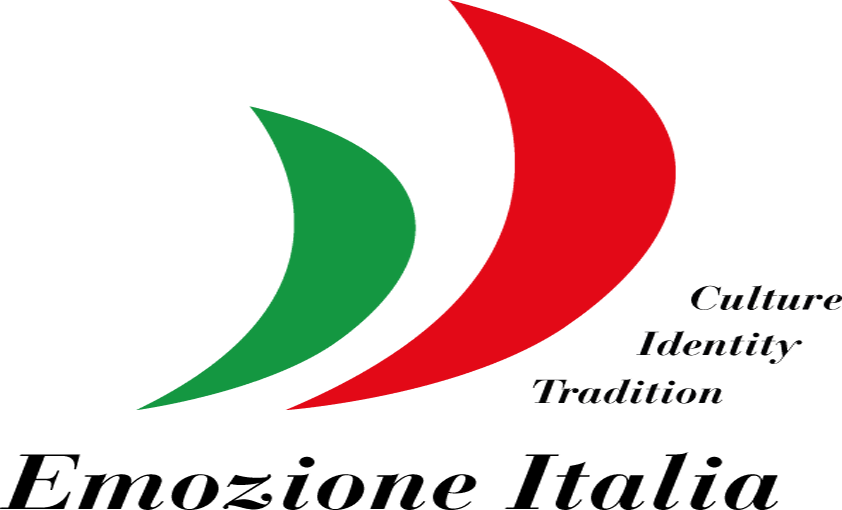Visit Milan
Visit Milan
Castelletto di Corbetta
via San Vittore, 2a – Corbetta (Milan)
The Castelletto di Corbetta, also known as the Castello di Sant’Ambrogio, is an ancient fortification in the old centre of the little town of Corbetta. Founded in the 9th century but undergoing wide restructuring during the 13th and 15th centuries, the building was given its current appearance with the urban renewal programmes of the 1940s.
Remains of the old Roman town walls can be seen in the castle grounds. The castle itself was the site of a famous siege by the Germanic Emperor Corrado il Salico in 1037.
Virtual Visit to EXPO 2015. Useful information
Rho Milano Fiera – EXPO 2015

For those who did not visit Expo Milano 2015, whether families or schools, the Virtual Tour is a fun way of seeing the Universal Exhibition. The images give a truly realistic view of the Decumanus – the main thoroughfare through the grounds flanked by the Pavilions of the participating countries – the Thematic Areas, Clusters, and the Cardus, with the Italy Pavilion. Viewers get a multi-media insight into Expo’s theme: “Feeding the Planet. Energy for Life”.
Start the Virtual Tour or visit the Official Website.
Casa de’ Busti
via Roma, 3 – Novate Milanese (Milan)
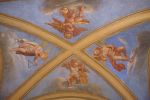
Located on the first floor of an ancient presbytery, the building was originally a patrician house, built, it is thought, by Bernardino de’ Busti in the 1520s. Bequeathed by the owner to the church, it was converted into a rectory in 1530.
Church of Santa Maria Nuova
Via Borsani – Abbiategrasso (Milan)
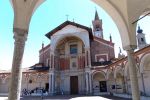
Built in 1388 to mark the founding of the town by the son of Gian Galeazzo Visconti, Giovanni Maria, the basilica is now preceded by a four-sided portico, built during the Renaissance, and by the huge arch of the pronaos, or porch, started in 1497, it is thought, by Donato Bramante and brilliantly completed in the 16th century by Tolomeo Rinaldi. A new sacristy was built in the 18th century on the north side of the presbytery, along with an ossuary at the foot of the belfry, and a new entrance to the four-sided portico.
The interior dates back to 1740 when the old church was transformed into a typically Baroque setting. The raised central nave was illuminated by eclectic-style windows allowing the daylight to illuminate the huge cross vaults that replaced the previous roof truss system. During the same period, five new chapels were built along the sides of the church.
Further changes were made during the 19th century. The vaults and balustrades were decorated with frescoes and marble flooring was laid.
Abbey of Morimondo
Piazza San Bernardo, 1 – Morimondo (Milan)
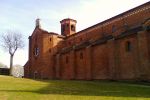
This example of Cistercian architecture shows the growing influence of the Gothic style at the time it was built. This is clearly seen by the ogival or ribbed vaulting, introduced to create rectangular spans. As a result, the central nave has a rectangular, not a square grid, unlike the side aisles, which have square sections. The effect is to heighten the sense of verticality. The Abbey of Morimondo marked a departure also in terms of size: its eight arched spans make it much larger than previous Cistercian churches. The abbey is imposing for its essential unadorned lines and unrendered brick surfaces. Left untouched by both the subsequent Renaissance and Baroque periods, it remains an example of the style and sense of order of 12thcentury architecture.
The typical layout of a Cistercian monastery is still legible in the cloister, which is surrounded by the chapter house and refectory with adjacent kitchen, now a beautiful seventeenth-century environment that also retains its original form. The monks’ dormitory (originally a single room) was built above the chapter house. Set on a broad slope, when seen from the east and south, the monastery appears as an imposing four-storey building.
The choir of carved wood dated 1522 replaced the original stalls. Its compact structure and architectural design make it an interesting example of wooden Renaissance furniture crafted with the techniques and style made popular in Lombardy by Bramante: hot-iron engraving with dark inlays. Although referencing the classics, the figures and symbols depicted nonetheless represent Christian spiritual values, such as the generosity of God’s gifts (the basket of fruit) or the salvation offered by Christ (the fish). Despite looting, earthquakes, changes made during the 17th century and its suppression in 1798, the monastery and the values on which it was founded remain very much alive today.
Abbey of Chiaravalle
Via Sant’Arialdo, 102 – Chiaravalle (Milan)
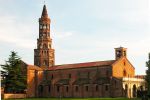
The Abbey of Chiaravalle is a Cistercian monastery located in what is now a designated agricultural area south of Milan. Founded in the 12th century by Saint Bernard of Chiaravalle as a sister abbey of Cîteaux, it was the centre of a small agricultural town that became part of the Milan metropolitan area in 1923.
The abbey church is one of the first examples of Gothic architecture in Italy. Thanks to the hydraulic technology and land reclamation capability of the monks, the monastery became a key driver of the economic development of this area south of Milan over subsequent centuries.
Commissioned by the Abbey, the oil-on-wood painting of Christ at the Column (93×62 cm) attributed to Donato Bramante and dated between 1480 and 1490 circa is today in Milan’s Brera Picture Gallery. It is the only wood panel painting attributed to Bramante.
Castle of Cassano d’Adda
Piazza Perrucchetti – Cassano d’Adda (Milan)
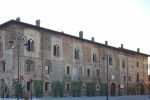
Located on the banks of the river Muzza at the end of the plain in the area of Bergamo, north of Milan, this castle was strategically placed to control the Adda pass and defend key trade routes.
Built between 1290 and the second half of the 15th century, the castle still retains is original appearance despite its long history and the many renovations made down the years.
Built on a trapeze-shaped plan, the sheer walls are made from cotto brick and river stones. The ceilings have pointed ribbed vaulting. Restoration work uncovered frescoes of the Giotto school.
Castle of San Giorgio
viale Pietro Toselli – Legnano (Milan)
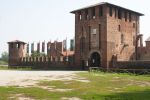
Built in the 13th century on a pre-existing Augustinian convent, this medieval fortification stands on a natural island in the river Olona. The presence of a castle at Legnano was due to the strategic military importance of the town, an independent municipality from the Middle Ages through to the 16th century situated on the important northwest route from the Olona valley to Milan.
Visconteo Castle
piazza Soncino – Cusago (Milan)
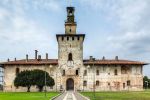
Built by Bernabò Visconti between 1360 and 1369, legend has it, on the ruins of a Longobard fortification, the Castle of Cusago was inhabited at length by the lords of Milan who transferred their court there to escape the epidemics that periodically broke out in the city, as well as for the hunting to be had in the extensive nearby forests teeming with wild boar, deer and many species of fowl. The castle was built for residential, not defensive purposes and so has no moat. It was, however, given a portcullis. While there is a central watchtower, there are no watchtowers on each corner.
The castle underwent considerable renovation during the Renaissance. Subsequently, however, it fell into disrepair, a state in which it still remains today.
Belgioioso Castle
Viale Dante Alighieri, 3 – Belgioioso (Pavia)
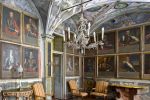
The castle of Belgioioso was built in the 14th century by the Visconti family. In the 18th century, the manor became the property of Don Antonio, the first Prince of Belgioioso, who started restoring and improving the former fortress. The castle was extended, rebuilt and embellished by the prince, a cultured lover of the arts and poetry who turned it into a vibrant artistic hub frequented by key figures of the Italian Enlightenment, such as Pietro Verri and Giuseppe Parini, as well as the poet Foscolo.
A typical neoclassical building with a square plan, the castle has a large central tympanum and handsome balcony. The landscaped park in front of the castle is entered across a drawbridge. Its beautiful exterior is complemented by an equally beautiful interior: an enormous, richly decorated atrium with precious marble, a sumptuous ‘Hall of Honour’ and many elegant rooms. Belgioioso is a favourite venue for prestigious events and ceremonies.
The City of Milan
Milan Cathedral
Piazza del Duomo – Milan
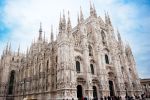
Milan’s cathedral, the Duomo, is the landmark building of the capital of Lombardy and one of the symbols of Italy. Dedicated to St Mary of the Nativity, it rises on the square of the same name in the very heart of the city. It is Europe’s fourth largest cathedral for surface area after St Peter’s in the Vatican, Saint Paul’s in London and the cathedral of Seville.
Once surrounded by a dense medieval urban fabric, the massive marble construction once soared above the small brick houses huddled around it. Ancient drawings and a series of photographs from the mid-19th century give a clear idea of the enormous impact the building must have had.
The cathedral is the work of centuries and does not fit into one precise style or movement. It can be summed up as monumental, phantasmagorical ‘Gothic’, re-interpreted, however, down the centuries.
Begun in 1386, it was added to and changed by numerous architects. The façade, started in 1567, was built in Baroque style and concluded in 1805. Small and very small towers were added over the 20th century. Despite this and despite the contradictory architectural styles, the Cathedral is an exquisitely harmonious whole, a majestic mass of white marble stretching for more than 157 metres. Light filters into the interior through beautiful stained glass windows. From the roof at the foot of the famous Madonnina statue, surrounded by the 135 spires that reach for the sky, the visitor can enjoy splendid views over the whole city.
Castello Sforzesco
Piazza Castello – Milan
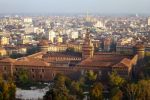
The Castello Sforzesco, one of the largest in Europe, is also a major symbol of the city of Milan and its history.
Built in the 15th century by Francesco Sforza when he became Duke of Milan, the castle stands on the ruins of a 14th century fortification known as Castrum Portae Jovis (the castle of the Gate of Jove or Jupiter), after the ancient Roman wall gate. The building underwent many changes down the centuries. Between the 16th and 17th centuries, it was one of the most important military citadels of Europe. Famous artists were engaged like Leonardo da Vinci – who decorated several rooms in the duke’s apartment, especially the Sala delle Asse with frescoes of plants entwined with fruit, roots and rocks – and Bramante – who is reported to have built a small bridge linking the castle to the so-called covered street nearby. Bonifacio Bembo was also commissioned to work on the castle.
What remains of the castle today is the oldest part dating back to the 14th and 15th centuries. The building has a square plan of around 200 metres long. Four towers rise from each corner, each oriented to one of the four cardinal points. The south and east towers framing the main façade of the castle looking towards the cathedral are cylindrical while the other two at the ends of the frontage facing the park are square. The central and highest tower signposts the main entrance and is known as the Torre del Filarete, after the Tuscan architect commissioned by Duke Francis I to design and build it. The castle is still surrounded by its ancient moat, although no longer filled with water. Restored in period style by Luca Beltrami between 1891 and 1905, the castle is now a major tourist attraction and venue for important cultural events.
Galleria Vittorio Emanuele II
Piazza Duomo – Milan
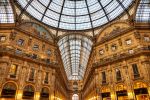
Milan’s Vittorio Emanuele II Gallery is a covered walkway. Shaped in the form of a cross, it has a large octagonal centre space where the arms meet. The long arms link Piazza Duomo with Piazza della Scale while the short arms connect the two side streets of Via Silvio Pellico and Via Ugo Foscolo. Designed by Giuseppe Mengoni, construction started in 1865. The style is eclectic, with grotesque motifs and caryatids, lunettes and decorative strips, typical of mid-19th century taste in Milan of the day. The statues decorating the covered part are by the Milanese sculptor Pietro Magni. Badly damaged during British air raids in August 1943, the gallery was rebuilt after the war.
Today the gallery is home to numerous top brand boutiques as well as famous cafés, restaurants and the Seven Stars Galleria luxury hotel. Together with Via Napoleone and Via della Spiga, it is considered one of the premier shopping precincts in the city.
Royal Palace
Piazza del Duomo, 12 – Milan

Milan’s Royal Palace started life as the Palazzo Broletto Vecchio and was the government headquarters when Milan was an independent city-state in the late Middle Ages. The palace remained a seat of political power during the reign of ‘Le Signorie’, or local lords. But it was during the French rule under Louis XII and subsequently under Francis I that the court moved from the Sforzesco Castle to what is now Palazzo Reale, remaining for centuries the seat of government.
The original design with two inner courtyards was subsequently partially demolished to leave room for the cathedral, which rises very close by, in between the palace and the Vittorio Emanuele II gallery on the opposite side of the square. Today the Royal Palace’s façade follows the line of the ancient courtyard and is set back from Piazza del Duomo, forming a small square known as Piazzetta Reale.
The palace underwent restructuring in 1773 by architect Giuseppe Piermarini. The resultant sober, austere building marked a first move away from the Baroque and the adoption by Milan of neoclassical architecture. Of particular note is the Sala delle Cariatidi (the State Room of the Caryatids) on the first floor occupying the space of a former theatre destroyed by fire in 1776. It is the most important room to have survived the Anglo-American air raid of 1943. Severely damaged by incendiary bombs and the tremendous blasts of air caused by the explosions, the building lay abandoned for two years, which caused further damage and consequent loss of most the neoclassical interior décor.
Today the Royal Palace is an important cultural venue for a wide range of exhibitions and events.
Pinacoteca Ambrosiana (Picture Gallery)
Piazza Pio XI, 2 – Milan

Founded by Federico Borromeo in 1618 near the historic library, Biblioteca Ambrosiana, (established in 1609), the institution was designed to ensure that talented artists and intellectuals received free education and training. As early as 1621, the Picture Gallery was in fact flanked by a picture and sculpture academy.
Today the Pinacoteca hosts works from the private collection of Federico Borromeo (in the four corridors surrounding the library reading room) as well as many works subsequently bequeathed to the museum. These include paintings by Leonardo, Botticelli, Bramantino, Bergognone, Bernardino Luini, Titian, Jacopo Bassano, Moretto, Caravaggio, Morazzone, Daniele Crespi, Andrea Appiani and Francesco Hayez.
Pinacoteca di Brera (Brera Picture Gallery)
Via Brera, 28 – Milan
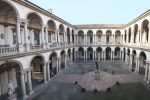
The Brera Picture Gallery (Pinacoteca di Brera) is a national museum of ancient and modern art. Located on the square of the same name, it was built on the site of an ancient convent of the Order of the Umiliati, one of the most powerful religious and economic associations in Milan during the late Middle Ages. The site was outside the urban centre – “braida”, or “breda” in the neo-Latin of the time meaning an outlying area – hence the name of the neighbourhood: “Brera”.
The building opens onto a courtyard surrounded by an elegant, two-storey portico in the centre of which stands the monument to Napoleon I by Antonio Canova. The museum is host to one of the most famous painting collections in Italy. Of particular note are the Venetian and Lombardy schools, although other movements are represented as well. Thanks to the many donations made over the years, the collection ranges from pre-history through to contemporary art and 20th century masterpieces.
Poldi Pezzoli Museum
Via Alessandro Manzoni – Milan

The Poldi Pezzoli Museum is located in the centre of Milan. Part of the “Case Museo di Milano” network, it boasts works by many artists including Perugino, Piero della Francesca, Sandro Botticelli, Antonio Pollaiolo, Giovanni Bellini, Michelangelo Buonarroti, Pinturicchio, Filippo Lippi, Andrea Mantegna, Jacopo Palma Vecchio, Francesco Hayez, Giovanni Battista Tiepolo, Jusepe de Ribera, Canaletto, Lucas Cranach the Elder and Luca Giordano.
The Dominican Convent of Santa Maria delle Grazie
Piazza di Santa Maria delle Grazie – Milan

The Church of Santa Maria delle Grazie is a basilica and sanctuary belonging to the Dominican Order and one of Lombardy’s outstanding Renaissance monuments. Built between 1466 and 1490 by the architect Guinifredo Solari in the Gothic style, only in 1492 was the apse – attributed to Bramante – made into a mausoleum at the order of Ludovico il Moro, Duke of Milan.
The frescoes on the vaults go back to the period of the construction itself. The refectory of the 15th century Church of Santa Maria delle Grazie, once the meeting place of the Court of Inquisition, has one of the masterpieces of all times: Leonardo da Vinci’s The Last Supper.
The cupboards for the priests’ robe in the old sacristy, built in 1499 and restored in 1982, have beautiful inlay work. There are also paintings and the remains of frescos dating back to when the church was built.
Leonardo da Vinci’s The Last Supper
Piazza di Santa Maria delle Grazie – Milan
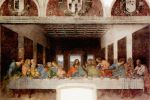
The former Renaissance refectory of the convent adjacent to the sanctuary of Santa Maria delle Grazie hosts The Last Supper, a wall painting (460×880 cm) executed by Leonardo da Vinci in oil-based tempera (and perhaps other oil-based binders) on plaster, dated 1494-1498.
This is the most famous painting of The Last Supper and a masterpiece of the Italian Renaissance in general. Unfortunately, because of the particular experimental technique used by Leonardo, the work has not resisted the damp of the environment and as a result suffered centuries of deterioration, even if more recently, avant-garde conservation techniques have been employed to ensure its safeguard.
The Last Supper is a UNESCO World Heritage monument. In front of the painting is the crucifix by Donato da Montorfano, a Lombardy painter who worked at the same time as Leonardo.
Teatro alla Scala (La Scala Opera House)
Via Filodrammatici, 2 – Milan

La Scala is one of the most famous opera houses in the world. For more than two hundred years it has hosted international artists and commissioned works that are still regularly performed by opera houses around the world.
The theatre takes its name from the Church of Santa Maria alla Scala that was demolished at the end of the 18th century to make way for the theatre, which was inaugurated on 3rd August 1778.
The work was entrusted to the famous architect Giuseppe Piermarini, who, taking his cue from the theatre designed by Vanvitelli for the royal residence of Reggia di Caserta, improved the acoustics of the auditorium by changing the curvature of the walls and the decorative structures. La Scala immediately became the “Italian opera house” model. Its “horse-shoe” layout would be copied in many theatres throughout Europe.
The main – neoclassical – façade is the part that has undergone fewer alterations over time. The only addition has been two small side structures topped by terraces, added in 1835. The most innovative aspect of the frontage is the gallery that the architect placed before the entrance to the theatre. It allowed opera goers of the time to arrive just a few steps from the entrance in horse-drawn carriages! May 2002 saw the presentation of the long overdue restructuring plan, which envisaged rebuilding the stage, fly tower, backstage and environments used by the artists. The revolutionary programme by architect Mario Botta was so far reaching that it wiped out evidence of the past and the many famous events and people that were part of the theatre’s history. Botta’s new fly tower, an elliptical structure rising above the old building and his other interventions caused heated debate over the visual and aesthetic impact the two new volumes would have.
Gallerie d’Italia (Museum)
Piazza della Scala, 6 – Milan
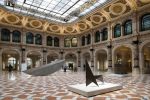
This exhibition complex offers Milan a surface area of some 8,300 sq m between Piazza della Scala, via Manzoni and via Morone. The buildings themselves make up a fascinating compendium of Milan’s architectural history and urban development from the end of the 18thand early 20th centuries.
The museum threads its way through these buildings, taking the visitor through the many aspects of two centuries of Italian art: the 19th century, represented by approximately two hundred works belonging to the Cariplo Foundation, a partner in the project, and to the bank, Intesa Sanpaolo – for the itinerary ranging from Canova to Boccioni; and the 20th century, with a selection of about eighty works from the bank’s collection for the exhibition entitled “Cantiere del ‘900” (Worksite of the 1900s) on Italian art of the 1920s through to the end of the last century.
The rooms of the Anguissola Antona Traversi and Brentani mansions – grand houses built in the 18th and 19th century – are occupied by 197 works from the 19th century, including bas reliefs of Antonio Canova (late 18th century) and masterpieces of the early 20th century by artists like Umberto Boccioni. 135 of the works on show belong to the Cariplo Foundation collection while 62 are from the Intesa Sanpaolo collection.
The collection is a fascinating journey through just over a century of Italian art that includes masters like Antonio Canova, Francesco Hayez, Gerolamo Induno, Angelo Inganni, Federico Zandomeneghi, Giovanni Boldini, Telemaco Signorini, Giovanni Segantini, Angelo Morbelli, Gaetano Previati, Giulio Aristide Sartorio and Umberto Boccioni.
The museum is arranged in thirteen thematic sections curated by Fernando Mazzocca.
Museo del Novecento (Museum of the 20thCentury)
Via Marconi, 1 – Milan

The organisers describe the museum as:
«Aiming to spread knowledge of 20th century art in order to broaden horizons and develop critical capacity».
On display are around four hundred works, all selection from the collection of some four thousand works held by Civiche Raccolte d’Arte, Milan’s City Art Collection, many hailing from the Jucker collection. Previously, from 1984 to 1999, the works had found a temporary home at Palazzo Reale (the Royal Palace). In fact the Museo del Novecentro fills a longstanding gap since Milan, the cradle of many fundamental artistic movements during the last century, did not have a dedicated exhibition venue for the art that flourished during this period. The permanent exhibition includes work from a range of different artistic movements: Futurism, Metaphysical Art, the Forma 1 Group, the Italian Transavantgarde, groups from Milan, Rome and Turin, and Arte Povera. Artists include Pellizza da Volpedo, Boccioni, Modigliani, De Chirico, Sironi, Fontana and many others. Of special note is a work by Fontana dated 1956: an entire ceiling created for the Hotel del Golfo in Procchio on the island of Elba. This enormous work, held in storage for years by the city authorities, has finally found a suitable exhibition space on the top floor of the Museum. The top floor is in fact entirely dedicated to Fontana.
While the baseline exhibition layout has been established, new formulae are continually under study. The visitor is greeted by De Chirico’s two Mysterious Baths Fountain sculptures originally created for the Triennale, together with a segment of ancient Roman flooring and by Pellizza da Volpedo’s famous painting The Fourth Estate. The first floor is given over to the Jucker collection and the Futurists. The second storey houses artists of the 20th century Abstract and Classicist schools. The third floor will show conceptual art. The tour concludes with displays of Arte Povera at the Civico Mueso d’Arte Contemporanea (CIMAC) housed in the adjacent Palazzo Reale, Piazza del Duomo 12.
